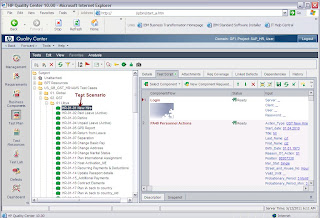BPT testing for SAP modules: I think this is one of the most complex test environments with
BPT and SAP application. Well, every thing make us easy if we had a proper planning and system environment in order to start a new project for automation.
Check list (In Order) for set up the automation test environment:
1.
QTP installation
2. QC Installation
3. SAP GUI installation & SAP environment configuration
4. SAP Add In
5. QC –
QTP connectivity set up.
Now, you are done with the system configuration.
As we know that, SAP application will be quite complex environment to automate if the
automator is not aware about the subject of SAP functionality. Basically, SAP is transaction depended
ERP module. It has lots of sub fields (like Material Management, Sales etc.) and transactions.
Talk about
BPT: Business Process Testing is the way to test the application against the business module created in Quality Center. Here we also have the option to create Business module through
QTP tool. The other option is to create through QC and then create the script in
QTP and save in QC data base.









